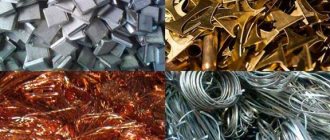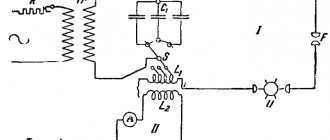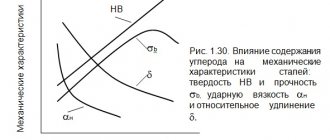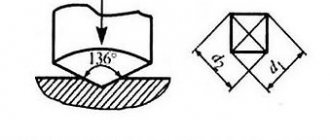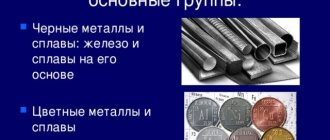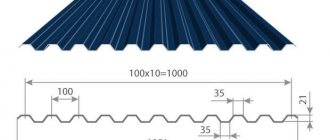METALS RESEARCH
- Comprehensive research of metal materials for the purpose of import substitution
- Analysis of equipment failures associated with metal of any level of complexity
- Research on wear resistance of metals and alloys
- Research of coatings of various natures
- Assessment of corrosion damage and corrosion rate of metal objects
- Audit, technical and legal support in determining the causes of destruction of metal materials and structures
- Selection and testing of metal objects to promote goods on the market
Study of the structure by various methods with determination of its morphology, as well as the sizes of structural elements, carbide, intermetallic particles, layers, including decarbonized ones
Study of the distribution of elemental composition, including on the plane and in volume. Construction of maps of the distribution of elements over an area
Study of the micro-mechanism of crack growth in steels and alloys
Study of wear resistance of metals and alloys using standard methods
Study of hardness HB, HRA, HRC, HRB, HV including microhardness distribution in large sections
Study of surface topography and its roughness using various methods, including laser confocal scanning and electronic scanning profilometry
Carrying out mechanical tests using traditional and proprietary methods, including newly developed ones
Chemical analysis services
Do you have doubts about the brand of metal or alloy? Do you want to make sure that it complies with GOST and TU? We will decipher your steel grade. We will help you determine whether the metal matches the declared imported (AISI, DIN) or domestic brand with high accuracy.
Order an analysis
Determination of the chemical composition of individual samples
Determination of chemical composition on-site
Benefits of working with us
On-site analysis
The ability to take measurements without cutting a sample from the finished product or workpiece.
We work all over Russia
We will come to any city in the country
High accuracy
In accordance with GOST 18895-97 “Method of photoelectric spectral analysis”
Efficiency
Possibility of departure on the day of application
State standard samples
To compare measurement results with government standards
Easy application process
Call or send a request from the website
How is steel grade determined?
During the production cycle, everything is simple and clear - metal blanks are purchased in rods, bars, sheets or strips. On one of the edges they are marked (engraved with numbers and letters) and have a special color - color is also a signal for metallurgists. In production, the bulk of the metal is used first, and this marked tip is used at the very end. But at home, craftsmen often buy steel secondhand or in such a form that the brand cannot be recognized. Therefore, below we will give several elementary ways to determine the material. To do this you will need:
- the workpiece itself (it is advisable to place it in a vice to reduce the risk of injury);
- hammer and chisel;
- grinding wheel;
- file;
- bake.
Also, create optimal conditions for the test in advance, namely, good lighting, equipment (wear safety glasses, protect exposed areas of the body), materials for comparison, if needed, Internet access.
Now we list the possible verification options.
Equipment used
We use high-tech analyzers:
PMI-Master UVR PRO with the ability to determine carbon "Oxford Instruments Analytical Gmbh" (Germany)
Mobile spectrometer for precision analysis and sorting of metals on site and in the laboratory.
X-MET 8000
without the ability to determine carbon "Oxford Instruments Analytical Oy" (Finland)
Portable metal analyzer with the ability to determine “light elements” (Si, Mg, Al).
Methods for determining steel grade
- Attach the cutting edge of the tool to the surface. Our task is to cut off the top thin layer of medium length. Now let's analyze the chips. If it breaks quickly, you can’t get it at all, only short fragments, then most likely you have high-carbon steel in your hands. It is because of the carbon content that plasticity is lost, hardness appears, and strength suffers. A low-carbon composition, on the contrary, will give long curls of a uniform structure. And the process of knocking down the top layer will be easier.
- More energy-consuming method. Suitable for those who have a stove - the most ordinary wood stove will do. But for the purity of the experiment, the higher the temperature maintained inside (before hardening), the better. Take a metal rod and a file. We make an incision and remember what efforts were made. Now we subject the sample to hardening and re-cut. If, after heating, ease of manipulation remains, then you are dealing with low-carbon steel. A large amount of carbon in the composition makes the metal difficult to process after hardening.
- For the third method we will need a grinding wheel. First, prepare your workplace - good lighting, put a dark, uniform background behind it so that the sparks are better visible. These are the ones that will be used to check the steel. If they are large, splash in a large volume, and are bright, then you are dealing with high hardness of the material. Otherwise, with a small sheaf and small particles of sparks, the metal is not solid. To correctly interpret the result, take another workpiece for comparison, the brand of which you know. Be sure to press both samples with the same force and at the same angle.
- Using a grinding wheel, you can determine the material by other characteristics, for example, the color of the sparks. Of course, a number of indicators are quite subjective; it is much better to test in comparison with other samples. If you have a lot of small stars scattering in different directions, but they fly close, and they have a red tint, then you are dealing with a high-carbon sample. A sheaf that is lighter and has fewer sparks will indicate an average carbon content, while a very small part of it in the composition will give long straw-colored stripes without stars at the ends - this is how iron is turned.
If you are dealing with steel that has been alloyed, then some of its characteristics can suggest what alloying elements were added. For example:
- The presence of phosphorus in large quantities (this is a harmful impurity) will lead to increased cold brittleness, that is, at negative temperatures, a metal sheet or rod will simply break and cracks will form on it.
- Chrome makes the workpiece very resistant to corrosion, so if you have a clean, rust-free sample that has been sitting outside for a long time, it is most likely chrome steel.
- The same chromium, like nickel, if a large amount is added, removes the magnetic properties of the sample.
Some other characteristics and special properties are not easy to check at home. But if you can determine the features of metalworking, hardening, and heat resistance, then you can find out the presence of other additives.
Problems of casting control and production features
The demand for premium quality castings with special surface properties is constantly growing. These include:
- high density;
- homogeneity of the material;
- absence of cuts and increased local stresses concentrated in one place.
In these cases, it is not enough to perform a quality check by simply determining the structure of the material and confirming the properties. Sometimes it is necessary to know the operating parameters:
- stress corrosion;
- tightness;
- resistance to alternating loads.
To confirm operational capabilities, the performance of products is assessed under conditions close to actual ones. To obtain a reliable result, laboratory conditions are required, the presence of:
- test bench;
- load simulator;
- identical operating conditions to the working environment;
- compliance with temperature conditions.
To confirm the quality of premium-segment castings, statistical methods of quality management are needed that identify defects in current production in order to eliminate them. A way to improve quality control is spectral analysis methods. Optical and X-ray spectrometers, quality analyzers, are used for express analysis of the chemical composition and determination of metal grades.
Chemical composition, chemical analysis of metal:
Determine the chemical composition of steels and alloys
Confirm steel grades
Restore product documentation
Confirm or deny a certificate
Incoming inspection of metals and alloys
Sorting scrap from ferrous and non-ferrous metals
Determine the chemical composition of ore rocks
Select analogues of steels and alloys (using a special program - steel grader Win Steel 8.0 Prof)
Chemical analysis of metal is used in the following cases:
Determination of the chemical composition of steels and alloys.
Restoration of product documentation.
Brand confirmation, certificate confirmation.
Incoming inspection of metals and alloys.
Sorting of scrap metals and alloys. Falsifications are quite common in this area, however, if the receivers use chemical analysis, metal determination, which gives the most accurate result, is guaranteed to save the enterprise from losses.
Selection of analogues of steels and alloys (using a special program - steel grader Win Steel 7.0 Prof).
Instrument calibration programs.
General concepts about steel grades
We will consider markings that were developed back in the USSR and are now actively used in Russia and in all neighboring countries. It is universal in that it includes all classes, of which there are a lot. Basic moments:
- The number is assigned to the entire batch, and a stamp is affixed (paint, by engraving) to each individual product. It consists of numbers and letters, no symbols.
- Sometimes the abbreviation “St” is indicated at the very beginning, that is, “steel,” but this is not at all necessary.
- Typically, the initial numbers indicate hundredths of carbon, while the letter designating this substance is not placed, since carbon content is one of the fundamental characteristics of alloys. For example, if 20 is indicated, then the content is 0.2%.
Now in more detail with an example:
We have letters (Russian or Latin, as in the sample), they indicate the alloying element that is in the composition. If you need a method for determining the grade of metal without reference books, then you will need to fill in the most common abbreviations:
- A – nitrogen.
- N – nickel.
- X – chrome.
- T – titanium.
- K – cobalt.
- B – tungsten.
- C – zirconium.
- C – silicon.
- D – copper.
- B – niobium.
- G – manganese.
- Yu – aluminum.
A more complete list can be found in regulatory documents. By the way, it is interesting that GOST standards for the production of steel alloys, adopted back in the Soviet Union, are still in force today, as are the marking rules. In total, the nomenclature includes more than 1,500 individual values - this is the number of varieties of metals in this category that are manufactured all over the world. It is not surprising that in such a variety it is very difficult to determine by eye what kind of material is in your hands.
We figured out the letters, now the numbers. Everything is simple with them - the first one belongs to carbon, and then we read from left to right: a letter, and behind it a digital indication - what proportion (as a percentage) of the substance is in the composition.
But, in addition to the designation of chemical elements, you can also find other, sometimes incomprehensible, letters. They may indicate the presence of special properties, as well as membership in any category. Let's look at how to check the steel grade using these designations below.
Material quality
In addition to additives specially introduced in precise proportions that improve the quality of the alloy, there are harmful impurities - they are in the solution during smelting without the intention of the metallurgists. These are usually non-metals that have a negative effect. For example, phosphorus makes the metal very brittle when the temperature drops, and sulfur leads to the formation of cracks when heated. Therefore, they try to get rid of these and other elements (oxygen, excess nitrogen), and the less of them in the sample, the higher its quality. May be called:
- ordinary, then “St” is put at the very beginning, this means that the impurities are in the amount of 0.06-0.07%;
- qualitative - no special marks are placed, substance content - up to 0.035%;
- high quality - at the end of the marking there will be an “A” (not to be confused with nitrogen), this means that no more than 0.025% of harmful elements;
- especially high-quality - the name ends with the letter “Ш”, and the percentage does not exceed 0.02%.
In addition, when working with an ordinary quality class, it is also necessary to take into account the categories - from 0 to 6. This results in “St” with a digital index. The lower the number, the better the composition, in terms of impurities.
Another important concept is the degree of deoxidation. This is an indicator that reflects the behavior of the metal in the molten state. It depends on how oxygen is removed from solution. According to this classification, alloys can be:
- Calm (SP in the marking), they harden without gas evolution. They contain manganese, silicon or aluminum.
- Semiquiescent (SS), which are deoxidized in two stages due to the retained carbon.
- Boiling (KP). During their heating, carbon dioxide is actively produced, which rises to the surface in bubbles and thus solidifies.
And if you are dealing with alloy steel, you may come across specialized designations; for example, here are a few abbreviations:
- Ш – ball bearing purpose.
- R – high-speed steel for making tools.
- A – automatic specialized.
- E - electrical, it is purified from virtually any impurities, more than 99% is solid iron.
